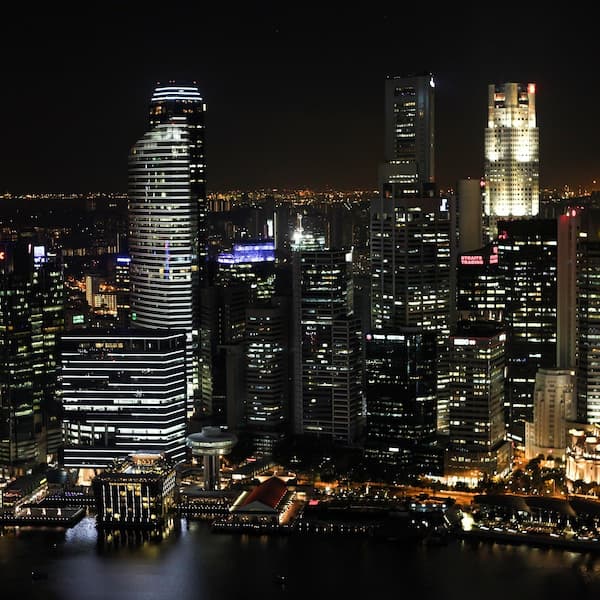
HSBC and Invesco”s investment managers discuss the macroeconomic outlook in the second half of 2024, and delve into investment opportunities, notably in Asia.
Wealth managers appear convinced that, whatever the troubles of
China and the geopolitical situation, Asia is where it’s at in
terms of robust investment returns and growth.
That appears to be the view of Cheuk Wan Fan, chief
investment officer, Asia at HSBC
Global Private Banking.
“Asia remains the most important growth engine of the global
economy with projected GDP growth and earnings growth for Asia
ex-Japan in 2024 at 4.6 per cent and 23 per cent, respectively,
well above the global peers,” Fan said in a recent note.
China’s stuttering growth in the past couple of years, as
demonstrated by concerns about debt-laden real estate sectors,
have given some managers pause about the country and wider
region. Beijing unveiled stimulative measures in recent months to
try and stabilise the situation. The MSCI China Index shows
returns (capital growth added to reinvested dividends) at 7.44
per cent in the year to date (in dollars). By comparison, the
MSCI World Index of developed countries’ equities shows returns
at 9.52 per cent.
Fan expects China’s latest property boosting measures to
stabilise GDP growth at 4.9 per cent this year. “India’s economic
activity continues to surprise to the upside on multiple fronts,
supporting our forecast 2024 GDP growth of 6.3 per cent,” Fan
said. “So far, the global equity rally has been led by Big Tech.
We have been broadening our geographical and sector exposure in
our global equity portfolios to widen the opportunity set and
find attractive stocks at reasonable valuations.”
Fan holds an overweight view on equities in Japan, India, and
South Korea, where she sees the best opportunities to tap into
Asia’s structural growth themes.
Nevertheless, she stays neutral on Hong Kong and mainland China
equities with an end-2024 target for the Hang Seng Index at
19,230. Fan expects that China’s five supportive measures will
attract southbound fund inflows into Hong Kong, which should help
improve the liquidity conditions of the Hong Kong stock market
and bring opportunities for undervalued quality stocks.
After the recent rally, Patrick Ho, chief investment officer,
North Asia, at HSBC Global Private Banking and Wealth, thinks the
Hang Seng Index’s valuation remains attractive. He prefers
undervalued quality stocks in the Chinese service consumption and
high-end manufacturing sectors. He focuses on select oversold
high-quality Hong Kong developers and REITs with strong balance
sheets and a competitive position. Ho prefers the Hong Kong
insurance, telecom and utility sectors for their growth
resilience and the benefit from expected Fed interest rate cuts.
Ho also favours corporate governance reform winners in
Japan, China and South Korea, which are cash-rich companies with
low leverage and the financial power to deploy cash to boost
shareholders’ returns through increasing dividend payments, share
buybacks and value-adding corporate actions. “Asian governments
and regulators are pushing for corporate reforms to boost
shareholders’ returns and close the valuation gaps of their
equity markets relative to the global peers,” Ho said.
“Japan provides an example of how improved corporate governance
standards can contribute to a re-rating of the equity market,” he
added. “China’s State Council recently announced the ‘Nine-Point
Guideline’ which stresses the importance of high dividends and
share buybacks. In South Korea, regulators have announced the
Corporate Value-Up Programme which aims at improving return on
equity and narrowing the ‘Korea discount’ versus its global
peers.”
Reshaping Asia’s supply chain
Ho looks for winners of the accelerating supply chain
reconfiguration and the friend-shoring trend amid
deglobalisation. This has resulted in rapid trade integration in
Asia. He favours high-end manufacturing leaders in Japan, South
Korea and Taiwan given their pivotal roles in the global
semiconductor supply chains. In ASEAN, Singapore, Malaysia and
Vietnam are strengthening their leadership positions in the
electronics industry.
“Electronics and electric vehicle manufacturers from North Asia
are ramping up production capacity in ASEAN to expand market
shares. ASEAN represents a big new market and a low-cost
production base for Chinese companies facing slower growth at
home,” Ho added. He favours companies in India and ASEAN that
gain from supply chain reorientation under the ‘China+1’ strategy
of multinational and Asian corporations.
The view from Invesco
Meanwhile, Raymond Ma, chief investment officer, Hong Kong &
China at Invesco believes that since the low of last November,
the bottom in the Chinese market has already been passed.
Ma thinks that by identifying Chinese companies which have a role
in the reorganisation of global supply chains – and that are
expanding their market share globally and domestically – the
risk of tariffs on Chinese goods impacting the business is
reduced. These companies have diverse supply chains, for example,
selling Chinese-made goods in China, Vietnamese-made goods in the
US, and Cambodian-made goods in Europe, limiting the impact of
tariffs.
The other theme Ma is watching in 2024 is companies that are
crucial to the electrical revolution. “With demand for
electricity-intensive industries like wind and solar energy,
electric vehicles, and data centres growing, so too does the
pressure on the grid. Therefore, we’re picking stocks
which can power the electric revolution,” Ma said.
Capturing peaking Asian yields
For income opportunities, HSBC’s Ho focuses on locking in
multi-year high yields from Asian investment grade (IG) bonds
with five to seven years’ duration. With continued
disinflation and the Fed’s rate cuts likely to start in
September, he expects many Asian central banks to start cutting
rates in H2 2024. He favours Japanese and Korean financials and
IG corporate bonds, Indian local currency bonds, Indonesian
quasi-sovereign IGs, Macau gaming and Chinese TMT credits.
India
Shekhar Sambhshivan, Indian equities investment director at
Invesco, highlighted how the new generation of Indian investors
are aspirational, save less, invest more, and consume more. This
group is providing liquidity, boosting valuations, and giving
rise to new investment opportunities for both local and global
investors.
“Demographics are one such tailwind. With a population of 1.4
billion, and a median age of 29, there is a fast-growing
population of aspirational consumers who are powering growth. For
example, nine to 10 million Indians are getting married each
year, more than the population of Hong Kong,” he said. He
assessed the entire wedding market, and estimated that it is
already worth close to $160 billion. He is seeing some very
interesting ideas in this highly-underpenetrated space which
has a long runway for growth.
“Further opportunities are arising from India’s manufacturing
renaissance. Through government policy, India is enticing
multinational companies like Apple and Micron to establish
production facilities, providing boosts to the local economy,”
Sambhshivan added. “Similarly, India’s reputation as ‘The World’s
Back Office’ is creating attractive opportunities in artificial
intelligence, with the power and real estate demands of the
sector providing a boost to domestic industries.” See more
commentary here on
India.
Global asset classes
HSBC GPB expects the improving global economic cycle, broadening
earnings’ growth and central bank rate cuts will bring plenty of
opportunities to put cash to work in quality bonds and equities.
For the next six months, HSBC GPB has adopted a risk-on
investment strategy with zero allocation to cash and overweight
on global equities, US Treasuries, and global investment grade
bonds. The US market remains its largest overweight within global
equities, and it stays overweight on Asian equities. It holds a
bullish view on the dollar due to support of high real yield,
divergent pace of central bank easing and safe-haven demand
driven by geopolitical uncertainty.
“We are optimistic about the investment outlook for the second
half of the year and continue to focus on putting cash to work in
global equities and bonds that we maintain our overweight
allocation,” Fan said. She believes that both the peak in bond
yields and the bottom of the global economic cycle has been seen.
This means that portfolio performance should be powered by two
engines: attractive bond yields and broadening earnings growth.
Adding to income opportunities, HSBC GPB looks for earnings’
growth, which is well supported by the broadening global cyclical
tailwind and easing cost pressures. US domestic demand is
resilient, while the eurozone and UK economies are bottoming out.
It forecasts global and US GDP growth to stay solid this year at
2.6 per cent and 2.3 per cent, respectively.
Putting cash to work in bonds and multi-asset
strategies
“Bond yields are currently near decade-high levels, and an
allocation to bonds and multi-asset strategies can help generate
a stable income stream, while providing portfolio diversification
to mitigate against tail risk events,” Fan said.
“Private markets have delivered outperformance versus the public
markets in the long term. As more companies are staying private
for longer, the depth, diversity, liquidity and ways to access
the market continue to grow,” Fan added. “Infrastructure
investments offer compelling structural growth opportunities on
the back of digitalisation, decarbonisation and
re-onshoring.”











